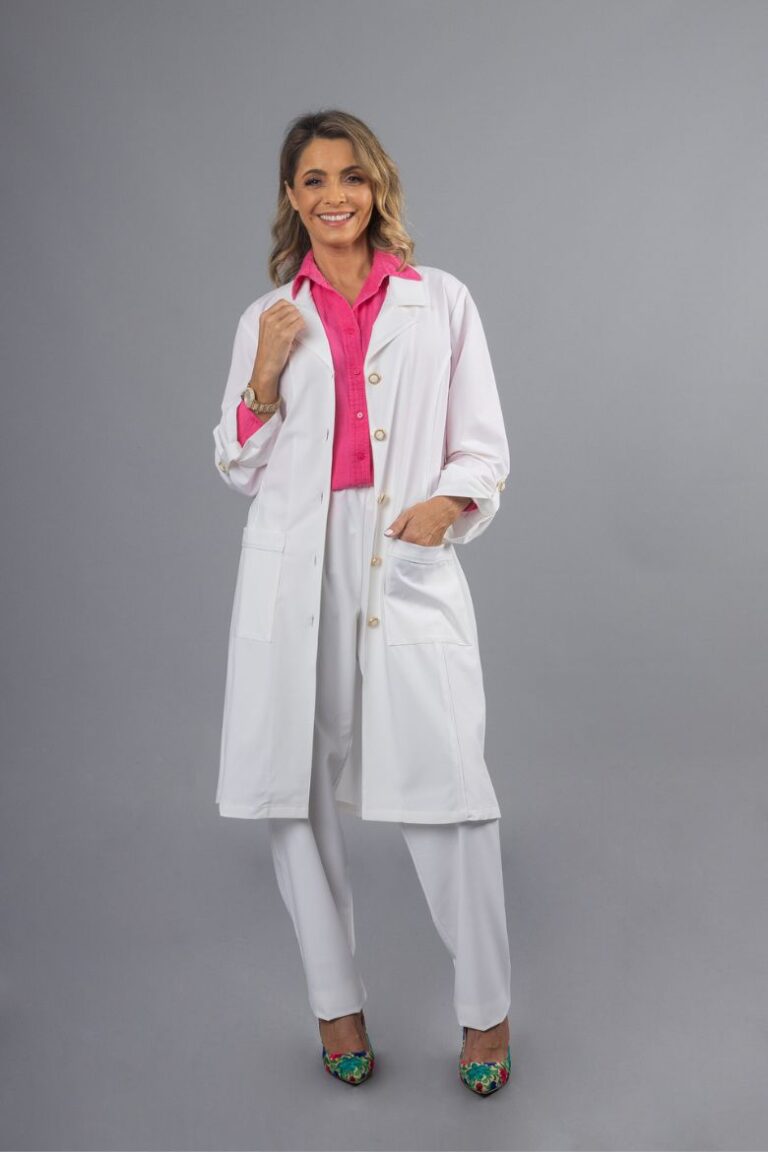
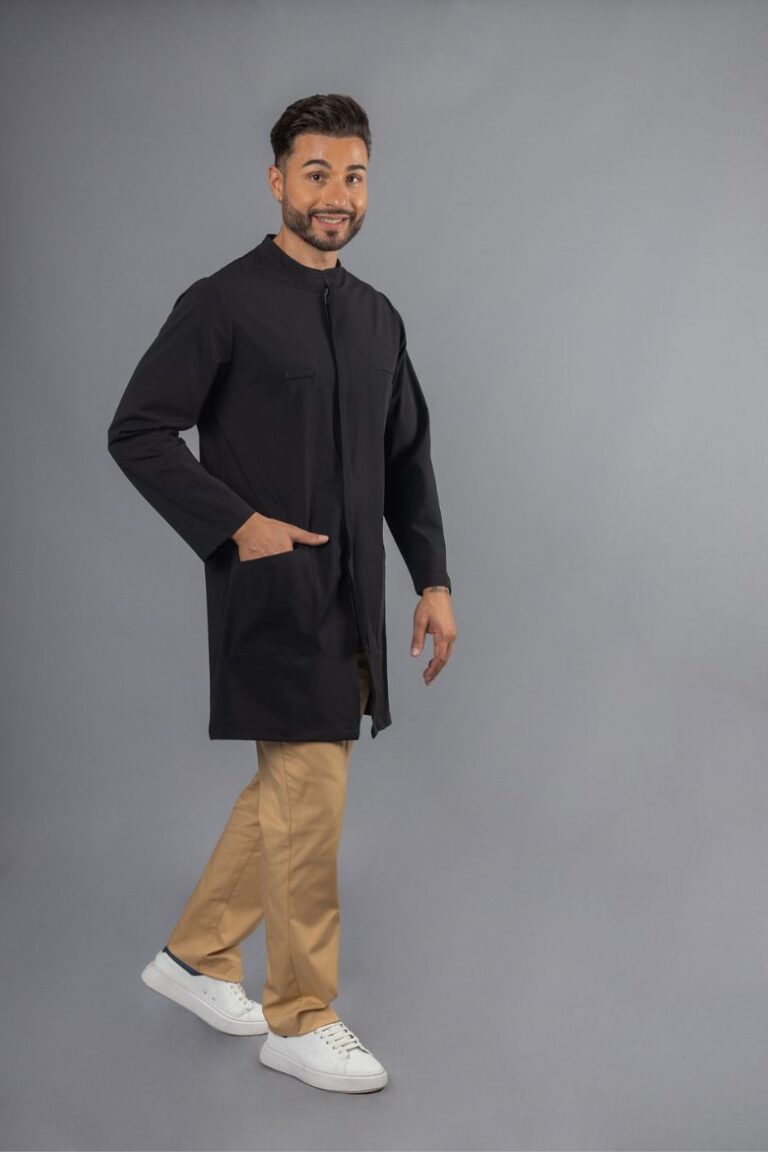








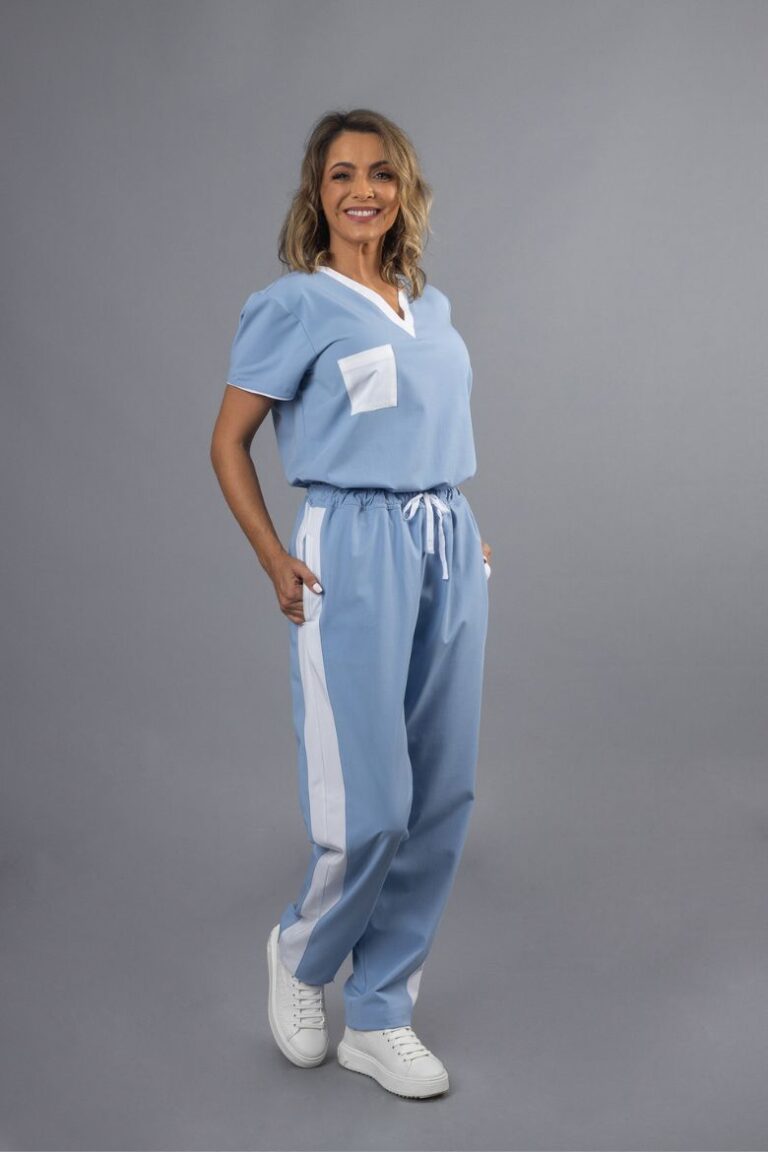
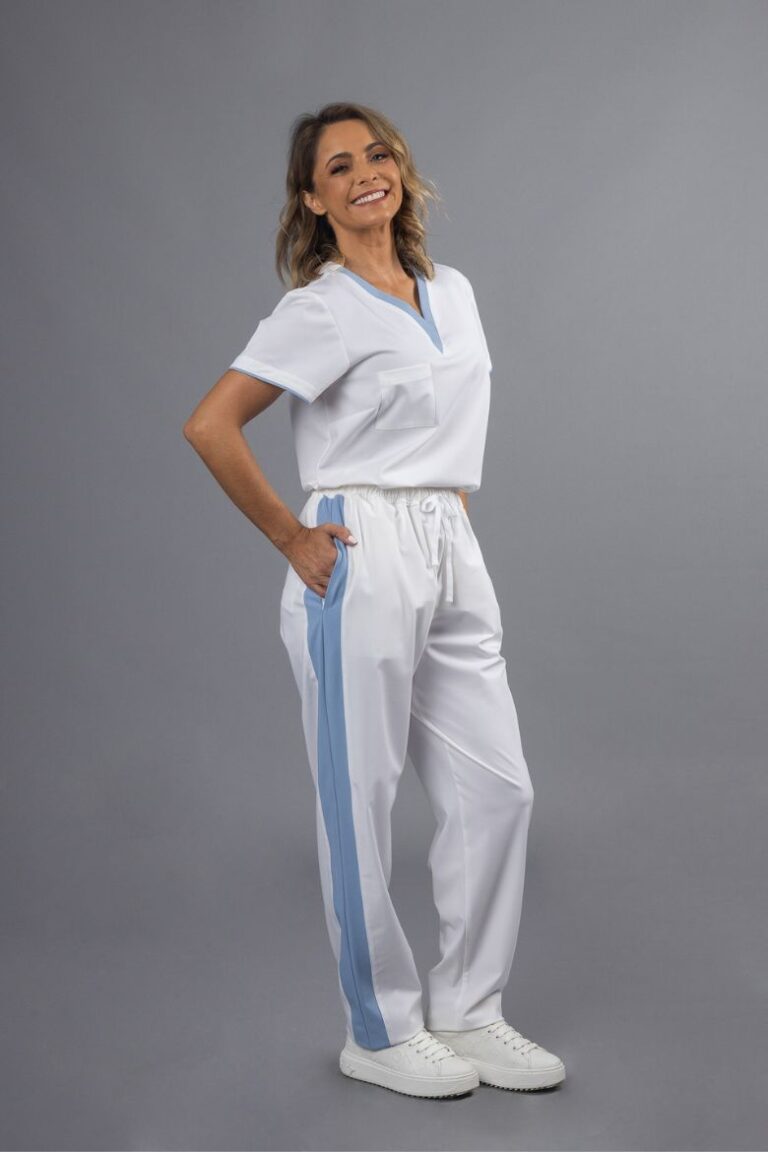


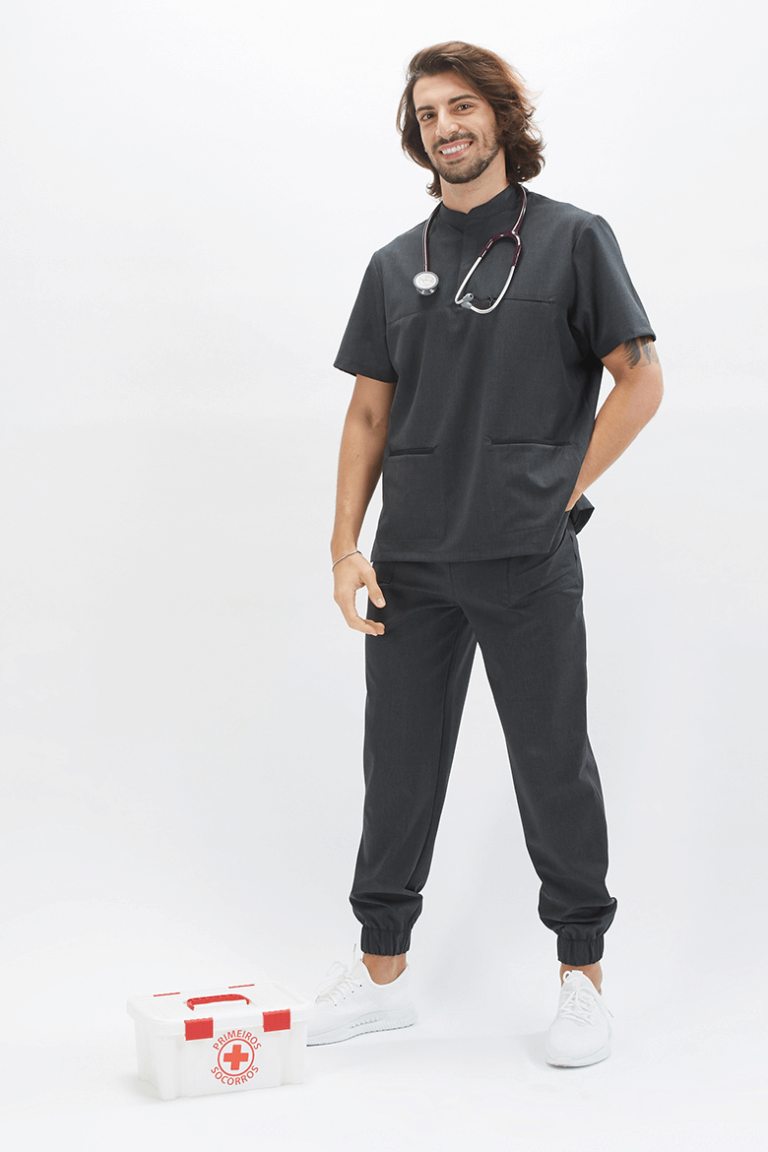
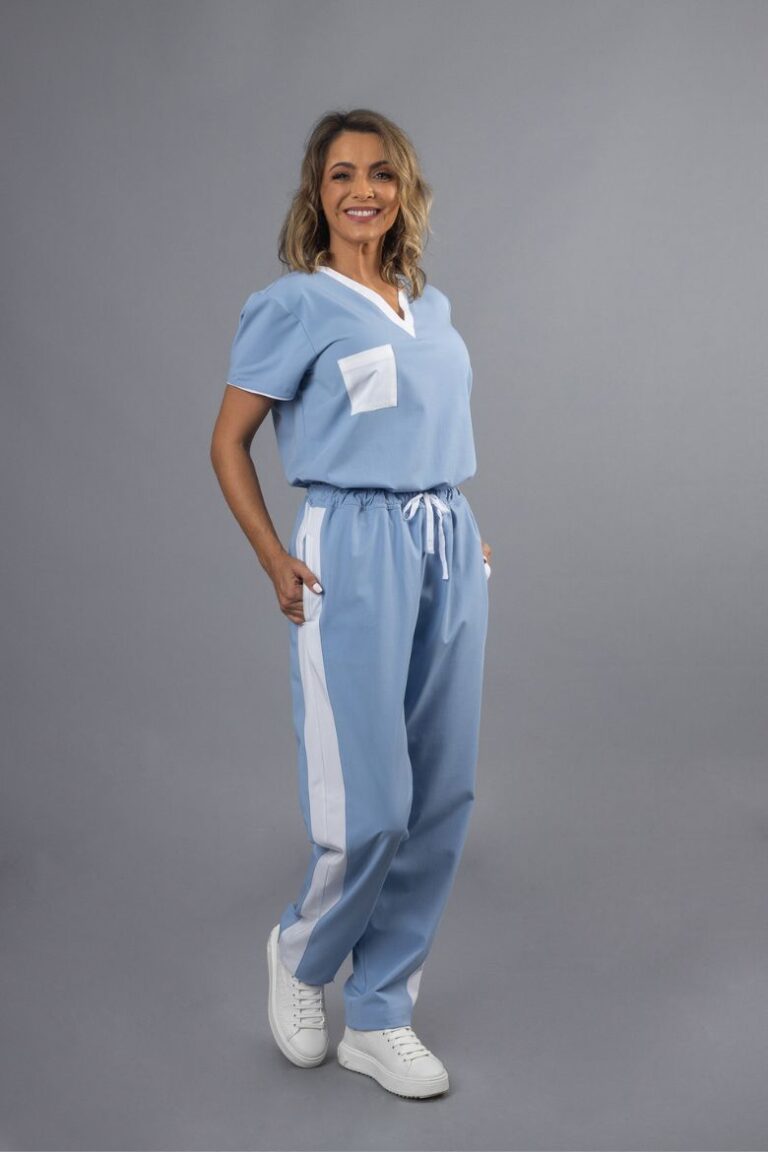
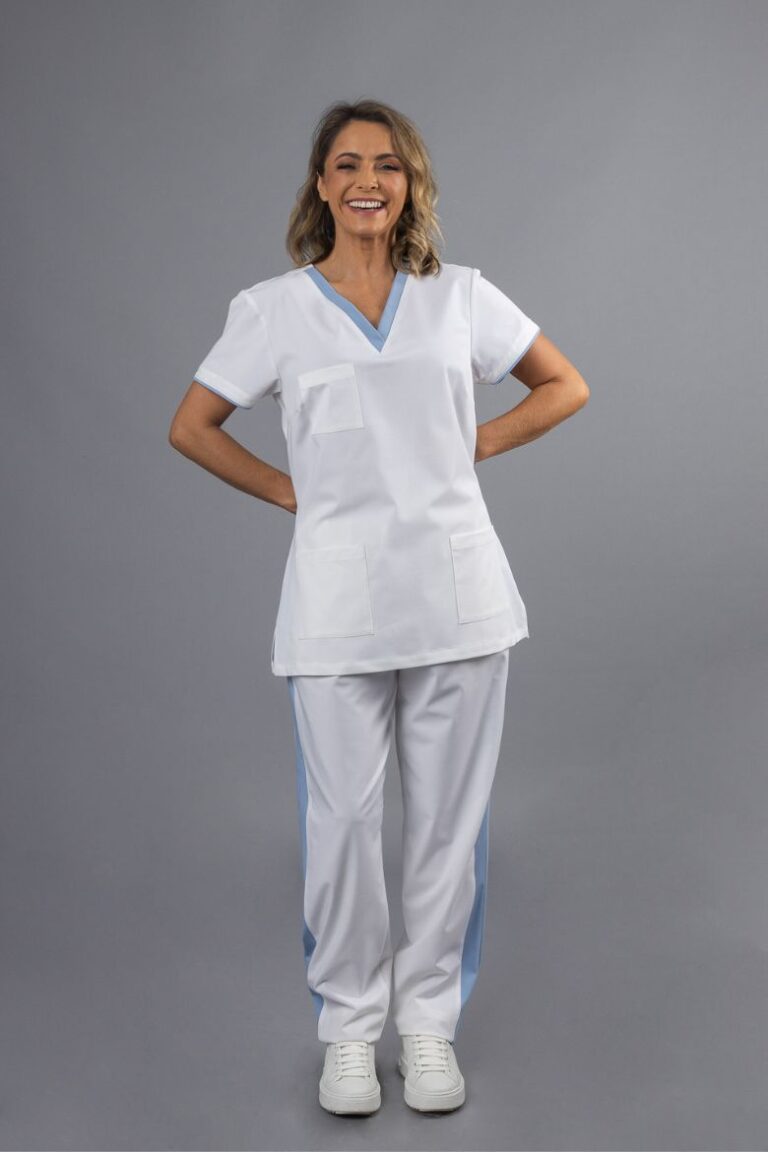

Products with visible prices are those that can be purchased immediately, online, without requiring minimum purchase quantities. This means you can explore our variety of options and purchase exactly what you need, with complete transparency regarding costs and the Professional Apparel model. On the other hand, products without a listed price function as a portfolio of possibilities. These items are highly customizable and can be tailored to each customer's individual specifications. To ensure quality and meet expectations, these products have a minimum order quantity and are subject to a custom quote process.
Various healthcare professionals wear hospital uniforms to work safely and hygienically in hospitals and medical clinics. Some of the most common professionals who wear hospital uniforms are: • Doctors: Doctors typically wear white or colored coats with logos or emblems that identify them as healthcare professionals. These clothes are comfortable and allow doctors to perform their duties safely, preventing cross-contamination. • Nurses: Nurses wear coats and uniforms that identify them as members of the medical team. Nursing gowns are different from surgical gowns and are usually white or light blue. They are designed to provide comfort and ease of movement during the nurse's daily tasks, such as measuring blood pressure and administering medications. • Nursing Technicians: Like nurses, nursing technicians wear coats and uniforms that identify them as members of the healthcare team. The coats worn by nursing technicians are also different from surgical gowns and may come in different colors to differentiate the different levels of responsibility within the team. • Surgeons: Surgeons wear special clothing during surgeries, including a surgical gown, gloves, mask, and shoe covers. These garments are designed to prevent contamination during surgery and ensure that the environment remains sterile. • Dentists: Dentists wear uniforms that identify them as healthcare professionals, typically consisting of a white or blue coat and pants. These clothes help protect both the dentist and the patient from contamination during dental procedures. These are just a few of the healthcare professionals who wear hospital uniforms. Each hospital or clinic may have its own rules and regulations regarding the use of uniforms, so it is important to consult local policies to understand which uniform pieces are required for each role.
Sanitizing hospital uniforms is extremely important to prevent the spread of diseases and maintain the safety of patients, healthcare professionals, and other hospital staff. Here are some general recommendations for properly washing and sanitizing hospital uniforms: 1. Separate hospital uniforms from other clothes: It is important to keep hospital uniforms separate from other clothing, especially personal items. This helps to avoid cross-contamination with germs or bacteria that may be on other items. 2. Wash uniforms separately: Wash hospital uniforms separately from other clothes in a washing machine at a temperature of 60°C (140°F) or higher. Higher temperatures help eliminate bacteria and germs from the fabric. 3. Use an appropriate detergent: Use an alkaline or enzymatic detergent to wash hospital uniforms. These products help eliminate germs and keep the fabric clean. 4. Rinse uniforms thoroughly: Make sure to rinse uniforms thoroughly to remove all detergent and bleach. 5. Dry completely: After washing, dry the hospital uniforms completely on a clothesline or drying rack. It is important to ensure the uniforms are completely dry before wearing them again. It is essential to follow the sanitization guidelines for hospital uniforms provided by the hospital and the uniform manufacturer to ensure maximum cleaning effectiveness and avoid any safety issues.
A hospital uniform is a set of clothing worn by healthcare professionals in hospitals, clinics, and other medical facilities. It is important to remember that healthcare professionals’ attire is not just a matter of appearance but also of safety, hygiene, and work efficiency. Here, we will explore what a hospital uniform is, the components that make it up, the professionals who wear it, and the advantages of its use.
What is a Hospital Uniform?
A hospital uniform is a type of clothing worn by healthcare professionals in medical facilities. The primary purpose of the uniform is to reduce the risk of contamination for both the professional and the patient. This is particularly important in areas with a higher risk of infections, such as operating rooms and isolation wards.
The uniform typically consists of various pieces, including gowns, pants, caps, shoes, and other accessories. The choice of specific pieces will depend on the work environment and the type of work the professional performs.
What Are the Components of a Hospital Uniform?
• Gown: The gown is the key piece of the hospital uniform, as it is the first line of defense against contamination. Hospital gowns can be made from various materials, such as synthetic or natural fabrics, and can offer different levels of protection. There are several types of gowns, including surgical gowns, isolation gowns, and cleanroom gowns, among others.
• Pants: Pants are part of the hospital uniform and, like the gown, must be resistant to contamination. Pants usually have an elastic waistband or drawstring to provide ease of adjustment and user comfort.
• Cap: The cap is used to cover hair and prevent loose hairs and particles from contaminating the environment. Caps are generally made from disposable materials, such as polypropylene, and can come in different shapes.
• Gloves: Gloves are used to protect the hands of healthcare professionals and patients. They are primarily used to prevent cross-contamination and should be changed after each procedure.
• Shoes: Hospital shoes are designed to minimize environmental contamination. They are typically made from synthetic materials or leather and should be comfortable to allow for long hours of use.
Which Healthcare Professionals Can Wear Hospital Uniforms?
This professional attire is worn by a wide range of healthcare professionals in various areas, including:
• Doctors: Doctors typically wear hospital uniforms during surgeries and medical procedures. Surgical gowns are made of durable, sterile materials and are used to prevent patient contamination.
• Nurses: Nurses wear hospital uniforms during medical procedures and when performing daily patient care. Nursing gowns are less sterile than surgical gowns but are still resistant to contamination.
Laboratory Technicians: Laboratory technicians typically wear this type of uniform to protect themselves from exposure to hazardous chemical and biological substances.
Physiotherapists: Physiotherapists wear hospital uniforms to protect themselves from exposure to bodily fluids during patient exercises.
Dentists: Dentists and dental assistants generally wear medical uniforms to protect themselves from exposure to bodily fluids during dental procedures.
Pharmacists: Pharmacists wear these work uniforms to protect themselves from exposure to hazardous chemicals while handling medications.
What are the Advantages of Wearing Hospital Uniforms?
Wearing hospital uniforms offers several advantages for healthcare professionals and patients, including:
• Protection against contamination: The uniforms are designed to reduce the risk of contamination for both patients and healthcare professionals.
• Hygiene: Hospital uniforms are generally made from washable and disposable materials, which help maintain a clean and hygienic environment.
• Identification: Hospital uniforms help identify healthcare professionals and distinguish between different roles within the medical team.
• Comfort: The uniforms are designed to be comfortable and durable, allowing healthcare professionals to move freely while working.
• Style: Medical uniforms can be customized with specific colors and logos, helping to reinforce the institution’s visual identity.
Fardamento à sua medida.
Descubra as nossas
soluções.
Fardamento à sua medida.
Descubra as nossas
soluções.
To subscribe, please enter your e-mail address and click on “Subscribe”.
You can stop receiving our communications by clicking on the link in the footer of any of our newsletters.
Para efetuar a sua subscrição, por favor insira o seu e-mail e clique em “Subscrever”.
Poderá parar de receber as nossas comunicações, ao clicar no link para o efeito encontrado nos rodapés de qualquer uma das nossas Newsletters.
UNIFARDAS® supports Espaço T, which is an inclusive organisation, of all and for all, and our common goal is to increase employment opportunities for young people with special needs and/or who, for some reason, have been excluded from the labour market.
We work hard to provide safe working conditions by going beyond the imposed and mandatory minimums.
We support, nurture and offer continuous training programmes aimed at improving skills.
At UNIFARDAS® we keep up to date with the latest technologies and innovations that can optimise our production process making it more efficient and close to zero waste.
UNIFARDAS® is a partner of Espaço T, an inclusive organisation, of all and for all, with the common goal of increasing employment opportunities for young people with special needs and/or who, for some reason, have been excluded from the labour market. In this organisation, immigrants will also find a support network in finding work and housing.
In addition to the sustainable path we have been taking throughout our production and supply chain, UNIFARDAS® participates, supports and organises a beach clean-up every year after the bathing season, in partnership with World Clean-up Day. We are also partners of Seaqual, an entity that, together with some other partners, promotes the collection of ocean waste and its transformation into upcycled marine plastic that will then be used in the production of fabric and other sustainable products.
In addition to the sustainable path we have been taking throughout our production and supply chain, UNIFARDAS® participates, supports and organises a beach clean-up every year after the bathing season, in partnership with World Clean-up Day. We are also partners of Seaqual, an entity that, together with some other partners, promotes the collection of ocean waste and its transformation into upcycled marine plastic that will then be used in the production of fabric and other sustainable products.